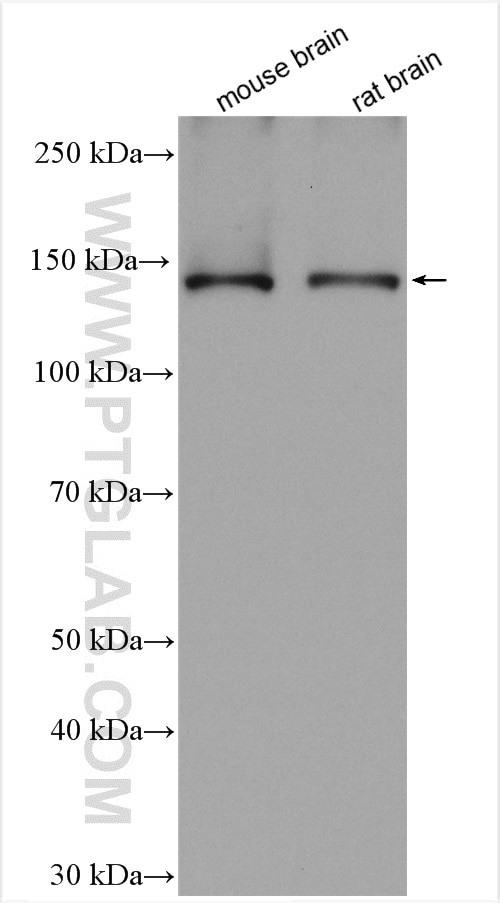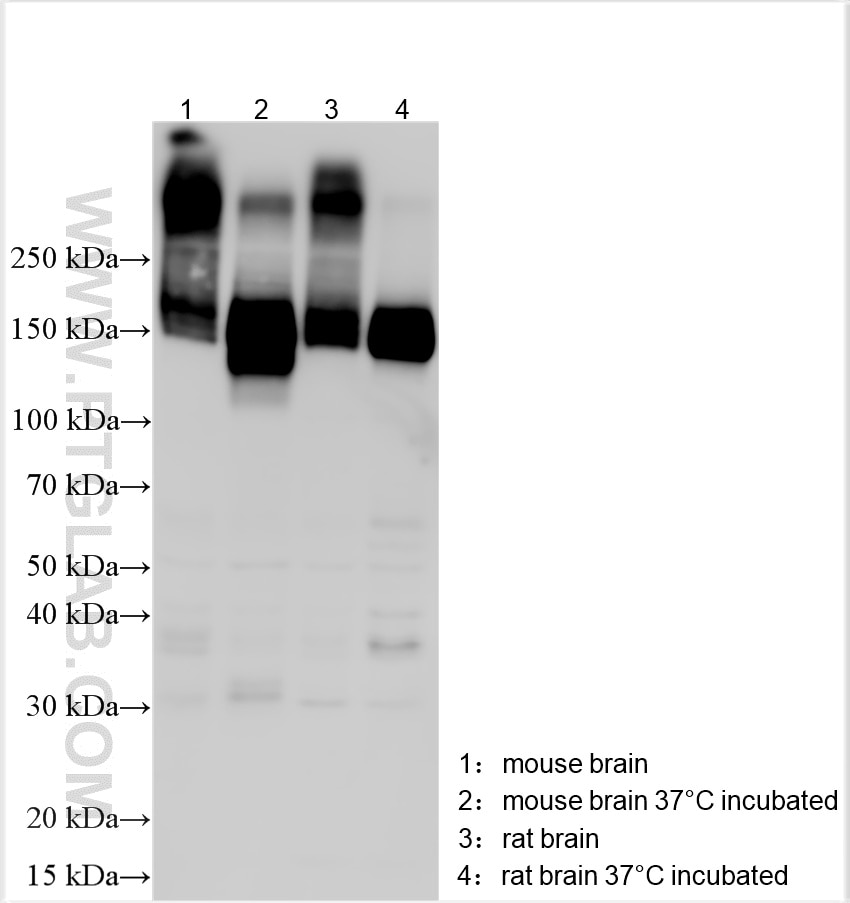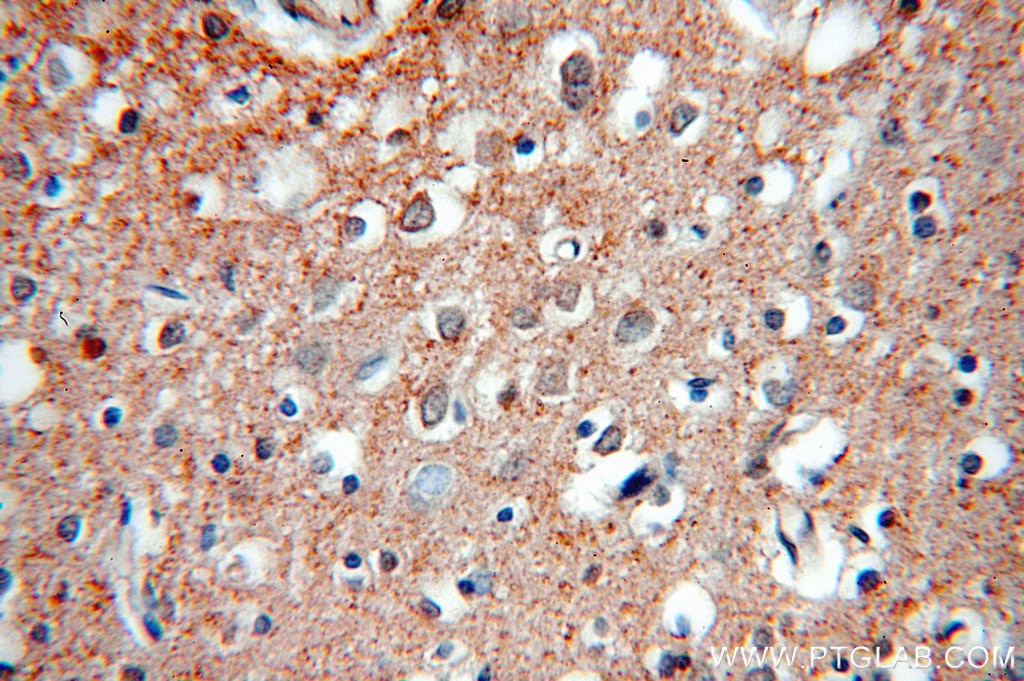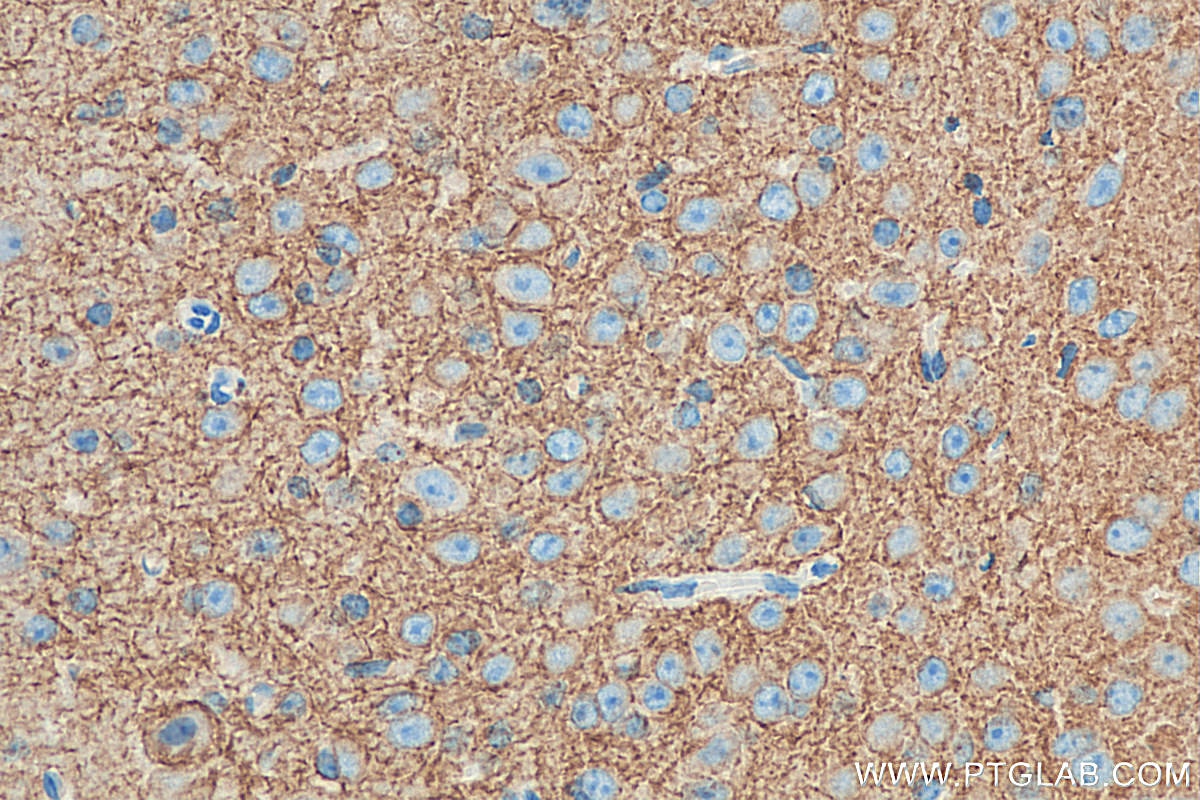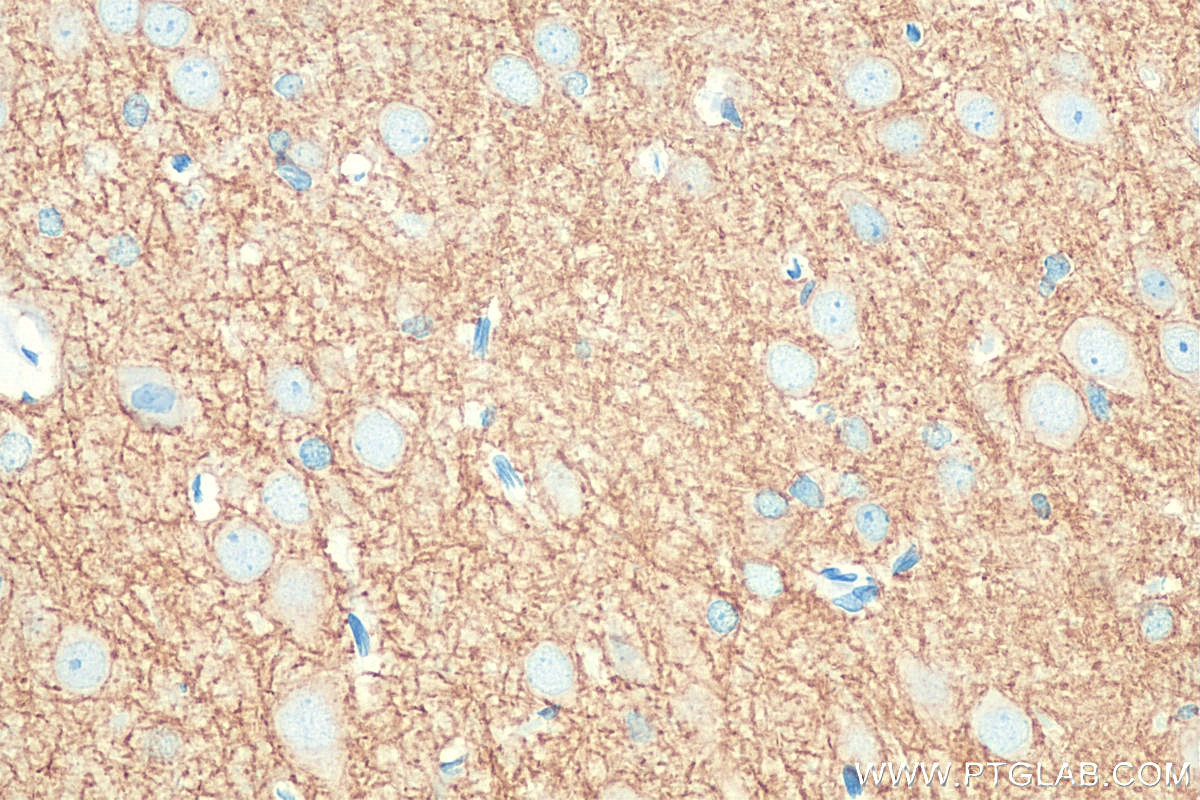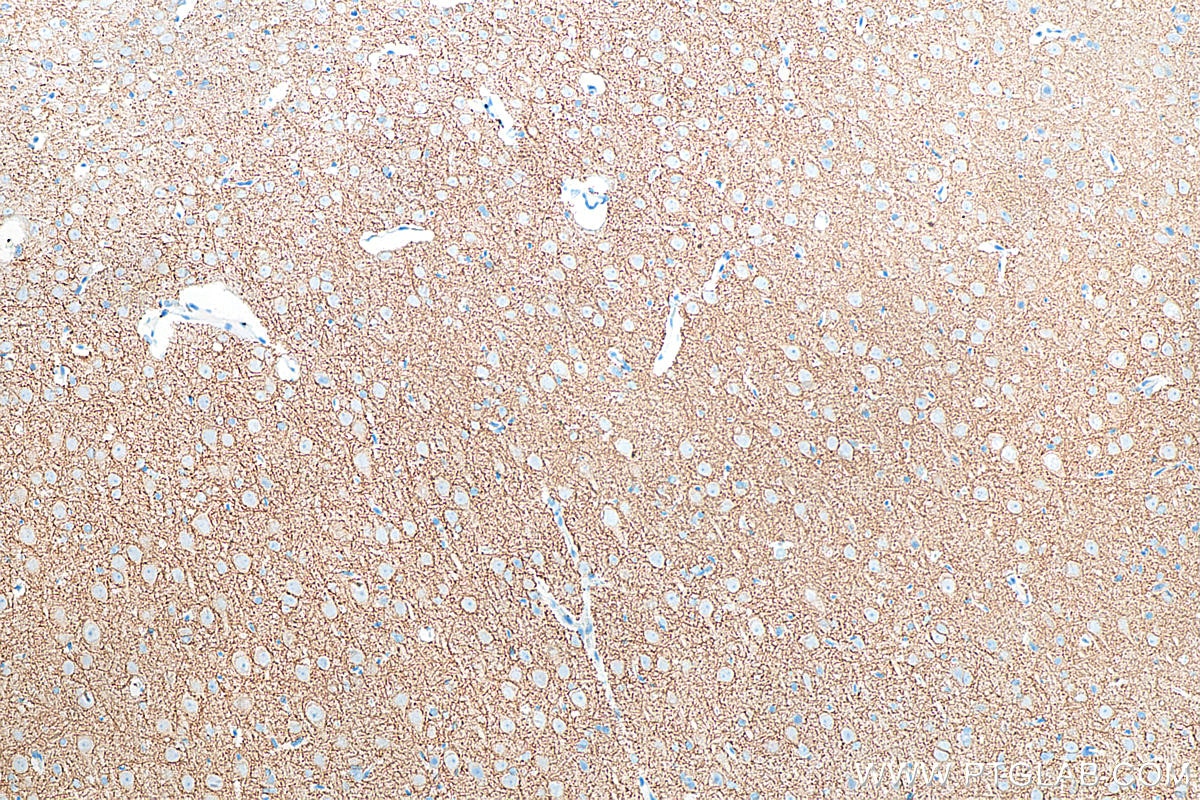Tested Applications
| Positive WB detected in | human brain tissue, mouse brain tissue, rat brain tissue |
| Positive IHC detected in | human brain tissue, rat brain tissue, mouse brain tissue Note: suggested antigen retrieval with TE buffer pH 9.0; (*) Alternatively, antigen retrieval may be performed with citrate buffer pH 6.0 |
| Positive IF-P detected in | mouse cerebellum tissue |
Recommended dilution
| Application | Dilution |
|---|---|
| Western Blot (WB) | WB : 1:500-1:2000 |
| Immunohistochemistry (IHC) | IHC : 1:20-1:200 |
| Immunofluorescence (IF)-P | IF-P : 1:50-1:500 |
| It is recommended that this reagent should be titrated in each testing system to obtain optimal results. | |
| Sample-dependent, Check data in validation data gallery. | |
Published Applications
| WB | See 5 publications below |
| IHC | See 1 publications below |
| IF | See 3 publications below |
Product Information
19565-1-AP targets KCC2/SLC12A5-Specific in WB, IHC, IF-P, ELISA applications and shows reactivity with human, mouse, rat samples.
| Tested Reactivity | human, mouse, rat |
| Cited Reactivity | human, mouse, rat |
| Host / Isotype | Rabbit / IgG |
| Class | Polyclonal |
| Type | Antibody |
| Immunogen |
Peptide Predict reactive species |
| Full Name | solute carrier family 12 (potassium-chloride transporter), member 5 |
| Calculated Molecular Weight | 126 kDa |
| Observed Molecular Weight | 130-150 kDa |
| GenBank Accession Number | NM_020708 |
| Gene Symbol | KCC2 |
| Gene ID (NCBI) | 57468 |
| RRID | AB_10638485 |
| Conjugate | Unconjugated |
| Form | Liquid |
| Purification Method | Antigen affinity purification |
| UNIPROT ID | Q9H2X9 |
| Storage Buffer | PBS with 0.02% sodium azide and 50% glycerol, pH 7.3. |
| Storage Conditions | Store at -20°C. Stable for one year after shipment. Aliquoting is unnecessary for -20oC storage. 20ul sizes contain 0.1% BSA. |
Background Information
KCC2, encoded by SLC12A5, is a neuron-specific K+-Cl- cotransporter that is essential for Cl- homeostasis and inhibitory synaptic transmission in brain. KCC2 is expressed at high levels in neurons throughout the nervous system. KCC2 deletion caused animal death. Alterations of KCC2 have been linked to neuropathic pain, temporal lobe epilepsy, and other diseases. This antibody can detect 130-150 kDa monomer and ~250 kDa dimer of KKC2 in brain lysate. (PMID: 23401525)
Protocols
| Product Specific Protocols | |
|---|---|
| IF protocol for KCC2/SLC12A5-Specific antibody 19565-1-AP | Download protocol |
| IHC protocol for KCC2/SLC12A5-Specific antibody 19565-1-AP | Download protocol |
| WB protocol for KCC2/SLC12A5-Specific antibody 19565-1-AP | Download protocol |
| Standard Protocols | |
|---|---|
| Click here to view our Standard Protocols |
Publications
| Species | Application | Title |
|---|---|---|
Neurobiol Dis HIV and opiates dysregulate K+- Cl- cotransporter 2 (KCC2) to cause GABAergic dysfunction in primary human neurons and Tat-transgenic mice. | ||
iScience Time-restricted feeding entrains long-term behavioral changes through the IGF2-KCC2 pathway. | ||
ASN Neuro Restoration of KCC2 Membrane Localization in Striatal Dopamine D2 Receptor-Expressing Medium Spiny Neurons Rescues Locomotor Deficits in HIV Tat-Transgenic Mice. | ||
Brain Behav Involvement of the BDNF-TrkB-KCC2 pathway in neuropathic pain after brachial plexus avulsion. | ||
Front Mol Neurosci Partially brain effects of injection of human umbilical cord mesenchymal stem cells at injury sites in a mouse model of thoracic spinal cord contusion | ||
Ecotoxicol Environ Saf 1,2-Dichloroethane causes anxiety and cognitive dysfunction in mice by disturbing GABA metabolism and inhibiting the cAMP-PKA-CREB signaling pathway |
Reviews
The reviews below have been submitted by verified Proteintech customers who received an incentive for providing their feedback.
FH Reyes (Verified Customer) (03-04-2024) | KCC2 (in green) worked in my IF in human FPPE brain sections
 |


